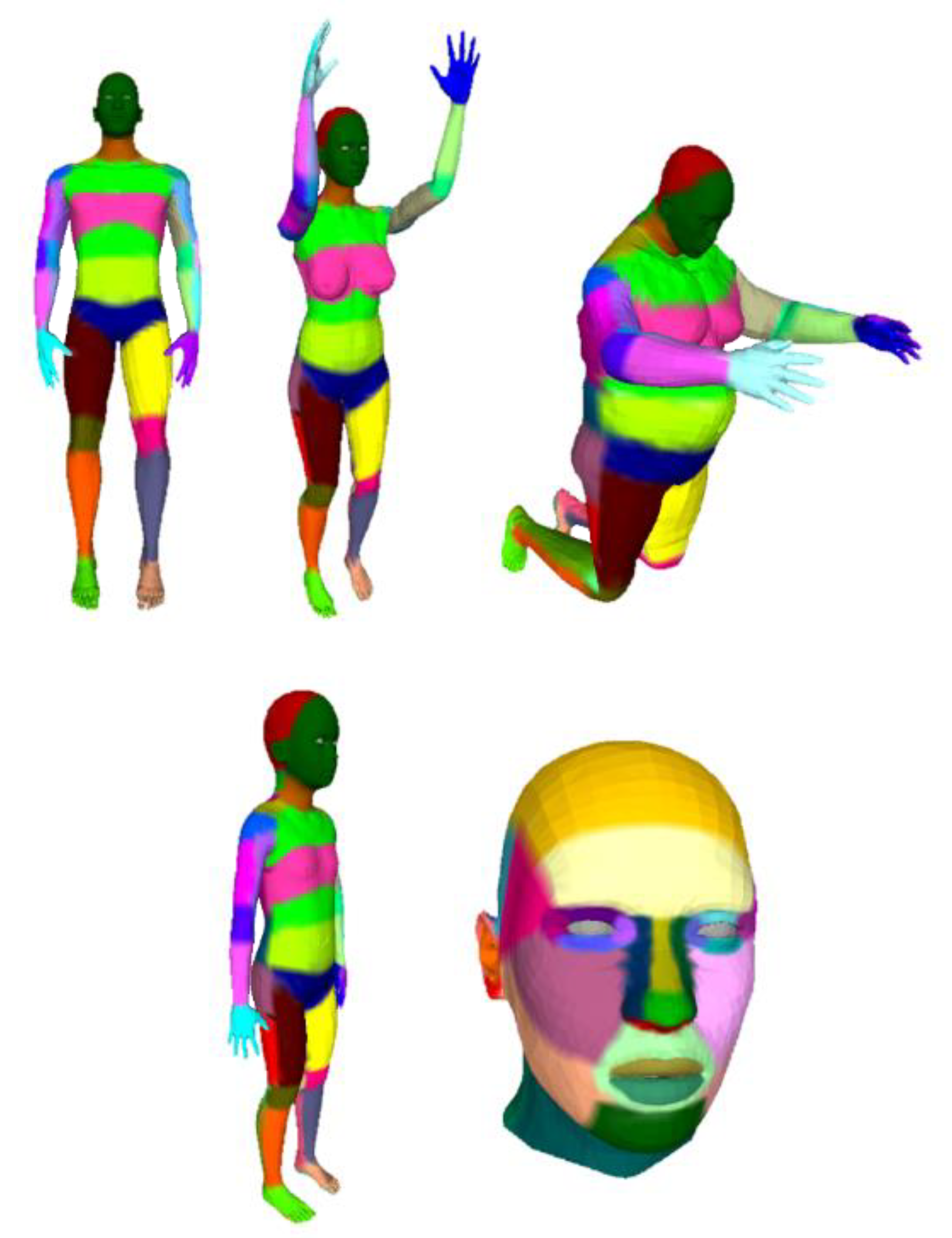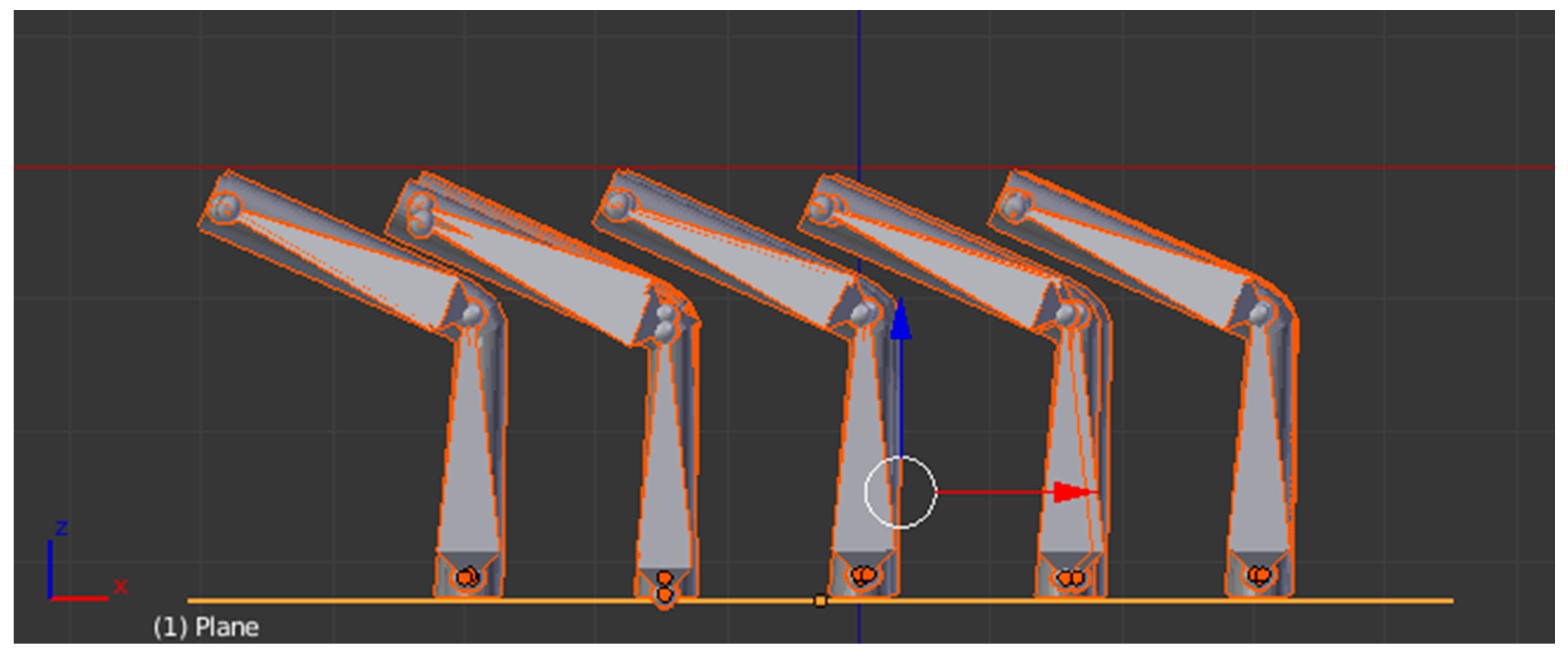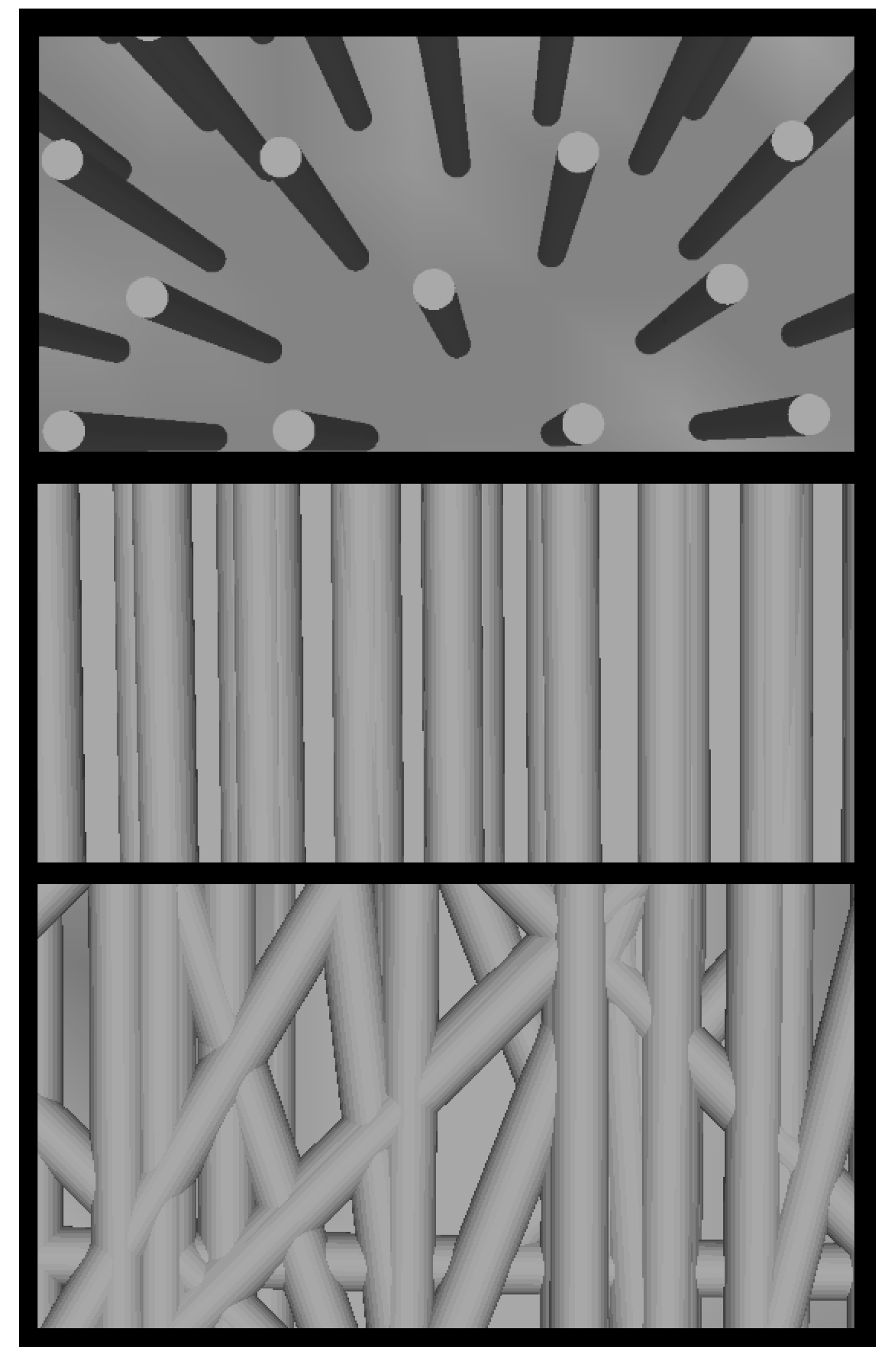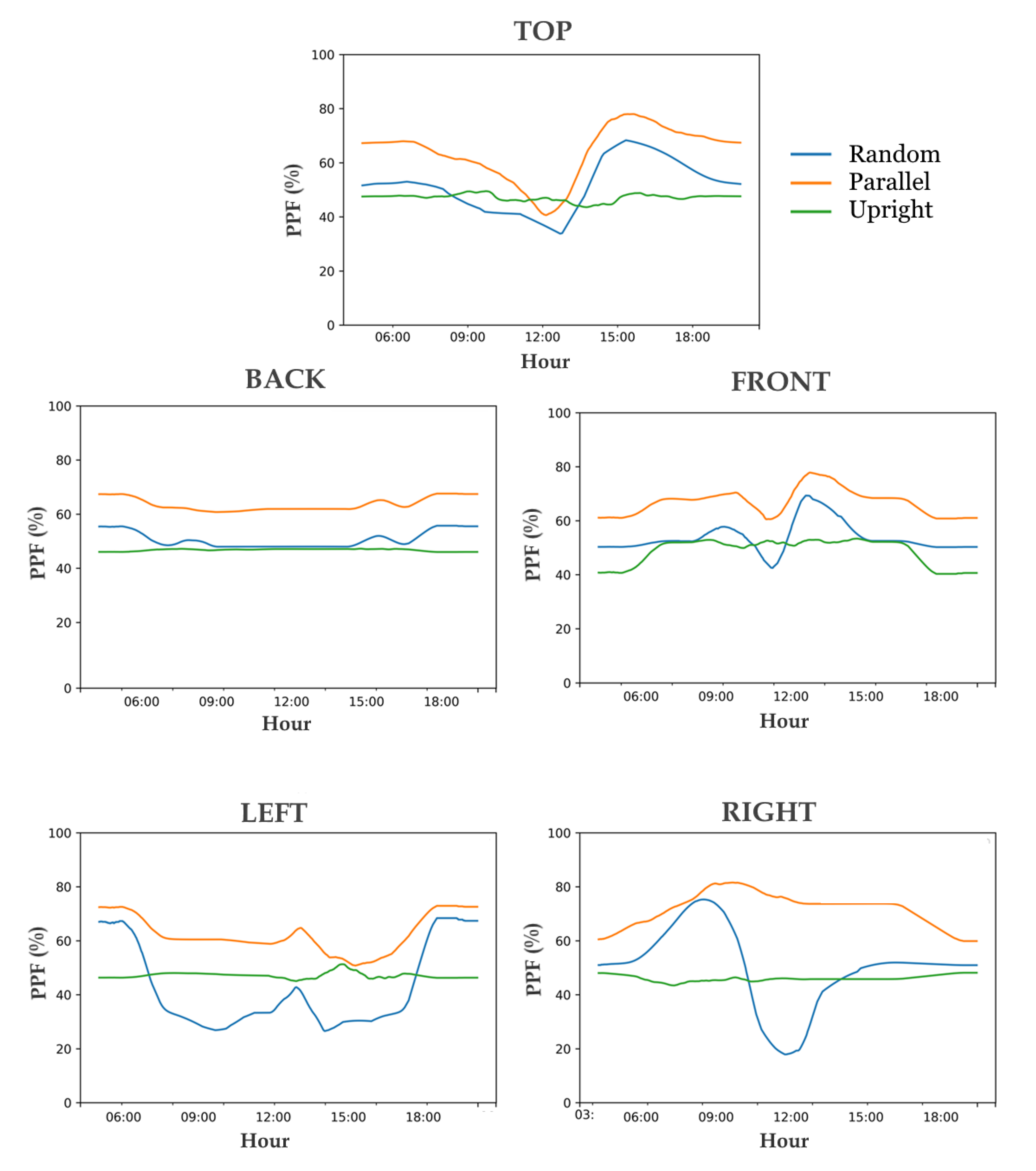3D Modelling for Solar Erythemal UV Protection Provided by Human Hair
Abstract
Featured Application
Abstract
1. Introduction
2. Materials and Methods
3. Results
4. Discussion
Author Contributions
Funding
Acknowledgments
Conflicts of Interest
References
- Vainio, H.; Wilbourn, J. Identification of carcinogens within the IARC monograph program. Scand. J. Work Environ. Health 1992, 18, 64–73. [Google Scholar]
- Blum, A.; Volkenandt, M.H. Skin cancer. DMW Dtsch. Med. Wochenschr. 2002, 127, 1679–1681. [Google Scholar] [CrossRef]
- Fisher, G.J.; Wang, Z.Q.; Datta, S.C. Pathophysiology of premature skin aging induced by ultraviolet light. N. Engl. J. Med. 1997, 337, 1419–1429. [Google Scholar] [CrossRef]
- Rogers, H.W.; Weinstock, M.A.; Harris, A.R. Incidence estimate of nonmelanoma skin cancer in the United States, 2006. Arch. Dermatol. 2010, 146, 283–287. [Google Scholar] [CrossRef]
- Fransen, M.; Karahalios, A.; Sharma, N. Non-melanoma skin cancer in Australia. Med. J. Aust. 2012, 197, 565–568. [Google Scholar] [CrossRef]
- Surdu, S.; Fitzgerald, E.F.; Bloom, M.S. Occupational exposure to ultraviolet radiation and risk of non-melanoma skin cancer in a multinational European study. PLoS ONE 2013, 8, e62359. [Google Scholar] [CrossRef]
- Hill, D.; White, V.; Marks, R. Melanoma prevention: Behavioral and nonbehavioral factors in sunburn among an Australian urban population. Prev. Med. 1992, 21, 654–669. [Google Scholar] [CrossRef]
- Parisi, A.V.; Kimlin, M.G.; Lester, R. Lower body anatomical distribution of solar ultraviolet radiation on the human form in standing and sitting postures. J. Photochem. Photobiol. B Biol. 2003, 69, 1–6. [Google Scholar] [CrossRef]
- Autier, P.; Boniol, M.; Doré, J.F. Sunscreen use and increased duration of intentional sun exposure: Still a burning issue. Int. J. Cancer 2007, 121, 1–5. [Google Scholar] [CrossRef] [PubMed]
- Stanton, W.R.; Janda, M.; Baade, P.D. Primary prevention of skin cancer: A review of sun protection in Australia and internationally. Health Promot. Int. 2004, 19, 369–378. [Google Scholar] [CrossRef]
- Glanz, K.; Buller, D.B.; Saraiya, M. Reducing ultraviolet radiation exposure among outdoor workers: State of the evidence and recommendations. Environ. Health 2007, 6, 22. [Google Scholar] [CrossRef] [PubMed]
- World Health Organization. Cancer Control: Knowledge into Action. WHO Guide for Effective Programmes: Prevention; World Health Organization: Geneva, Switzerland, 2007. [Google Scholar]
- Turnbull, D.J.; Parisi, A.V. Dosimeter for the measurement of UV exposures related to melanoma induction. Phys. Med. Biol. 2010, 55, 3767. [Google Scholar] [CrossRef] [PubMed]
- Weihs, P.; Schmalwieser, A.; Reinisch, C. Measurements of personal UV exposure on different parts of the body during various activities. Photochem. Photobiol. 2013, 89, 1004–1007. [Google Scholar] [CrossRef] [PubMed]
- Siani, A.M.; Casale, G.R.; Modesti, S. Investigation on the capability of polysulphone for measuring biologically effective solar UV exposures. Photochem. Photobiol. Sci. 2014, 13, 521–530. [Google Scholar] [CrossRef] [PubMed]
- Kimlin, M.G.; Parisi, A.V.; Downs, N.D. Human UVA exposures estimated from ambient UVA measurements. Photochem. Photobiol. Sci. 2003, 2, 365–369. [Google Scholar] [CrossRef]
- Hoeppe, P.; Oppenrieder, A.; Erianto, C. Visualization of UV exposure of the human body based on data from a scanning UV-measuring system. Int. J. Biometeorol. 2004, 49, 18–25. [Google Scholar] [CrossRef]
- Streicher, J.J.; Culverhouse, W.C., Jr.; Dulberg, M.S. Modeling the Anatomical Distribution of Sunlight. Photochem. Photobiol. 2004, 79, 40–47. [Google Scholar]
- Religi, A.; Moccozet, L.; Farahmand, M. Simuvex v2: A numeric model to predict anatomical solar ultraviolet exposure. In Proceedings of the 2016 SAI Computing Conference (SAI), London, UK, 13–15 July 2016; pp. 1344–1348. [Google Scholar]
- Religi, A.; Moccozet, L.; Vernez, D. Prediction of anatomical exposure to solar UV: A case study for the head using SimUVEx v2. In Proceedings of the 2016 IEEE 18th International Conference on E-Health Networking, Applications and Services (Healthcom), Munich, Germany, 14–16 September 2016; pp. 1–6. [Google Scholar]
- Diab, R.; Wright, C.; Martincigh, B. Anatomical distribution of ultraviolet solar radiation. S. Afr. J. Sci. 2004, 100, 498–500. [Google Scholar]
- Diffey, B.L. An overview analysis of the time people spend outdoors. Br. J. Dermatol. 2011, 164, 848–854. [Google Scholar] [CrossRef]
- Vernez, D.; Milon, A.; Vuilleumier, L. Anatomical exposure patterns of skin to sunlight: Relative contributions of direct, diffuse and reflected ultraviolet radiation. Br. J. Dermatol. 2012, 167, 383–390. [Google Scholar] [CrossRef]
- De Gàlvez, M.V.; Aguilera, J.; Bernabò, J.L. Human hair as a natural sun protection agent: A quantitative study. Photochem. Photobiol. 2015, 91, 966–970. [Google Scholar] [CrossRef] [PubMed]
- Parisi Alfio, V.; Smith, D.; Schouten, P. Solar ultraviolet protection provided by human head hair. Photochem. Photobiol. 2009, 85, 250–254. [Google Scholar] [CrossRef] [PubMed]
- Parisi, A.V.; Turnbull, D.J.; Downs, N. Dosimetric investigation of the solar erythemal UV radiation protection provided by beards and moustaches. Radiat. Prot. Dosim. 2011, 150, 278–282. [Google Scholar] [CrossRef] [PubMed][Green Version]
- Khouas, L.; Odet, C.; Friboulet, D. 3D furlike texture generation by a 2D autoregressive synthesis. J WSCG 1998, 6, 171–177. [Google Scholar]
- Yacoob, Y.; Davis, L.S. Detection and analysis of hair. IEEE Trans. Pattern Analysis Mach. Intell. 2006, 28, 1164–1169. [Google Scholar] [CrossRef] [PubMed]
- Ward, K.; Bertails, F.; Kim, T.Y. A survey on hair modeling: Styling, simulation, and rendering. IEEE Trans. Vis. Comput. Graph. 2007, 13, 213–234. [Google Scholar] [CrossRef]
- Selle, A.; Lentine, M.; Fedkwin, R. A mass spring model for hair simulation. ACM Trans. Graph. TOG. 2008, 27, 64. [Google Scholar]
- McKenzie, R.; Blumthaler, M.; Diaz, S. Rationalizing nomenclature for UV doses and effects on humans. CIE WMO GAW Joint Rep. 2014, 211, 1–22. [Google Scholar]
- Visualization and Computer Graphics Library (VCG). Available online: http://vcg.isti.cnr.it/vcglib/ (accessed on 5 November 2019).
- Meshlab. Available online: www.meshlab.net (accessed on 3 October 2019).
- Vernez, D.; Milon, A.; Francioli, L. A numeric model to simulate solar individual ultraviolet exposure. Photochem. Photobiol. 2011, 87, 721–728. [Google Scholar] [CrossRef]
- Religi, A.; Backes, C.; Moccozet, L. Body anatomical UV protection predicted by shade structures: A modeling study. Photochem. Photobiol. 2018, 94, 1289–1296. [Google Scholar] [CrossRef]
- Backes, C.; Religi, A.; Moccozet, L. Sun exposure to the eyes: Predicted UV protection effectiveness of various sunglasses. J. Expo. Sci. Environ. Epidemiol. 2019, 29, 753–764. [Google Scholar] [CrossRef] [PubMed]
- Backes, C.; Religi, A.; Moccozet, L. Facial exposure to ultraviolet radiation: Predicted sun protection effectiveness of various hat styles. Photodermatol. Photoimmunol. Photomed. 2018, 34, 330–337. [Google Scholar] [CrossRef] [PubMed]
- MakeHuman. Available online: http://www.makehumancommunity.org/ (accessed on 3 October 2019).
- Di Giacomo, T.; Moccozet, L.; Magnenat-Thalmann, N. Towards Automatic Character Skeletonization and Interactive Skin Deformation. Eurograph. Stars 2007, 1, 47–61. [Google Scholar]
- Di Giacomo, T.; Kim, H.; Moccozet, L.; Magnenat-Thalmann, N. Control structure and multi-resolution techniques for virtual human representation. In Shape Analysis and Structuring; Springer: Berlin/Heidelberg, Germany, 2008; pp. 241–274. [Google Scholar]
- Blender. Available online: https://www.blender.org/ (accessed on 3 October 2019).
- Milon, A.; Sottas, P.-E.; Bulliard, J.-L. Effective exposure to solar UV in building workers: Influence of local and individual factors. J. Expo. Sci. Environ. Epidemiol. 2007, 17, 58. [Google Scholar] [CrossRef]
- Milon, A.; Bulliard, J.-L.; Vuilleumier, L. Estimating the contribution of occupational solar ultraviolet exposure to skin cancer. Br. J. Dermatol. 2014, 170, 157–164. [Google Scholar] [CrossRef]
- Fritz, A.G. International Classification of Diseases for Oncology: ICD-O; World Health Organization: Geneva, Switzerland, 2013. [Google Scholar]
- Kuchinke, C.; Nunez, M. An anisotropy correction method for all-sky measurements of diffuse UV-B erythemal irradiance. J. Atmos. Ocean. Technol. 2003, 20, 1523–1533. [Google Scholar] [CrossRef]
- Bittner, J.; Wonka, P. Visibility in computer graphics. Environ. Plan. B Plan. Des. 2003, 30, 729–755. [Google Scholar] [CrossRef]
- Reinau, D.; Weiss, M.; Meier, C.R. Outdoor workers’ sun-related knowledge, attitudes and protective behaviours: A systematic review of cross-sectional and interventional studies. Br. J. Dermatol. 2013, 168, 928–940. [Google Scholar] [CrossRef]
- Bao, Y.; Qi, Y. A survey of image-based techniques for hair modeling. IEEE Access 2018, 6, 18670–18684. [Google Scholar] [CrossRef]
- De Lacharriére, O.; Deloche, C.; Misciali, C. Hair diameter diversity: A clinical sign reflecting the follicle miniaturization. Arch. Dermatol. 2001, 137, 641–646. [Google Scholar]
- Matthijsen, J.; Slaper, H.; Reinen, H.A.J.M. Reduction of solar UV by clouds: A comparison between satellite-derived cloud effects and ground-based radiation measurements. J. Geophys. Res. Atmos. 2000, 105, 5069–5080. [Google Scholar] [CrossRef]
- Stoker, H.S. General, Organic, and Biological Chemistry; Nelson Education: Toronto, ON, Canada, 2012. [Google Scholar]
- Slominski, A.; Wortsman, J.; Plonka, P.M. Hair follicle pigmentation. J. Investig. Dermatol. 2005, 124, 13–21. [Google Scholar] [CrossRef] [PubMed]
- Diffey, B.L.; Cheeseman, J. Sun protection with hats. Br. J. Dermatol. 1992, 127, 10–12. [Google Scholar] [CrossRef] [PubMed]
- Turnbull, D.J.; Parisi, A.V.; Sabburg, J. Scattered UV Beneath Public Shade Structures During Winter. Photochem. Photobiol. 2003, 78, 180–183. [Google Scholar] [CrossRef]
- Turnbull, D.J.; Parisi, A.V. Increasing the ultraviolet protection provided by shade structures. J. Photochem. Photobiol. B Biol. 2005, 78, 61–67. [Google Scholar] [CrossRef]
- Utrillas, M.P.; Martinez-Lozano, J.A.; Nunez, M. Ultraviolet radiation protection by a beach umbrella. Photochem. Photobiol. 2010, 86, 449–456. [Google Scholar] [CrossRef]
- Lesage, C.; Barbe, C.; Le Clainche, A. Sex-related location of head and neck melanoma strongly argues for a major role of sun exposure in cars and photoprotection by hair. J. Investig. Dermatol. 2013, 133, 1205–1211. [Google Scholar] [CrossRef]
- Trüeb, R.M. Effect of ultraviolet radiation, smoking and nutrition on hair. In Alopecias-Practical Evaluation and Management; Karger Publishers: Basel, Switzerland, 2015; pp. 107–120. [Google Scholar]
- Youl, P.H.; Janda, M.; Aitken, J.F. Body-site distribution of skin cancer, pre-malignant and common benign pigmented lesions excised in general practice. Br. J. Dermatol. 2011, 165, 35–43. [Google Scholar] [CrossRef]
- Nogueira, A.C.S.; Joekes, I. Hair color changes and protein damage caused by ultraviolet radiation. J. Photochem. Photobiol. B Biol. 2004, 74, 109–117. [Google Scholar] [CrossRef]
- Šebetic, K.; Sjerobabski, M.I.; Čavka, V. UV damage of the hair. Coll. Antropol. 2008, 32, 163–165. [Google Scholar]






| Anatomical Zone (Body) | Subanatomical Zones |
|---|---|
| Head | Skull, Face |
| Neck | Front, Back |
| Trunk | Top, Front, Torso, Chest **, Belly, Lower belly |
| Trunk Back | Upper, Lower, Posterior |
| Arm * | Shoulder, Upper arm inside, Upper arm outside |
| Elbow * | Inside, Outside |
| Lower Arm * | Inside, Outside |
| Hand * | Palm, Back |
| Leg * | Upper front, Upper back |
| Knee * | Front, Back |
| Lower Leg * | Front, Back |
| Foot * | Palm, Back |
| Facial Zone | Subanatomical Zones |
|---|---|
| Head | Forehead, Crown, Nape |
| Face | Cheek *, Mandible *, Chin, Temple * |
| Neck | Front, Back |
| Orbital region * | Tear-duct, Upper, Lower, Lateral |
| Internal eye * | Pupil, White * |
| Ears * | Auricula, Earlobe, Earlobule front/back |
| Nose | Columnella, External nose *, Tip, Dorum nasale |
| Oral region | Upper lip, Lower lip, Orbicularis oris |
| Top | Front | Back | Right | Left | |
|---|---|---|---|---|---|
| SZA | Upright | ||||
| 25°–30° | 44.4 | 52.4 | 47.1 | 45.8 | 45.9 |
| 30°–35° | 47.0 | 51.7 | 47.1 | 45.8 | 47.4 |
| 35°–40° | 47.4 | 52.5 | 47.1 | 46.4 | 49.7 |
| >40° | 48.5 | 51.1 | 46.1 | 47.1 | 46.5 |
| Parallel alignment | |||||
| 25°–30° | 63.9 | 75.7 | 61.9 | 73.7 | 62.3 |
| 30°–35° | 58.0 | 68.4 | 61.9 | 74.2 | 56.7 |
| 35°–40° | 62.7 | 66.5 | 61.9 | 77.5 | 55.4 |
| >40° | 65.6 | 69.1 | 79.2 | 63.4 | 56.5 |
| Random | |||||
| 25°–30° | 50.9 | 67.7 | 48.0 | 34.4 | 38.0 |
| 30°–35° | 51.2 | 52.5 | 48.0 | 34.2 | 30.9 |
| 35°–40° | 53.8 | 53.0 | 48.0 | 42.0 | 32.3 |
| >40° | 48.8 | 54.9 | 62.8 | 39.2 | 39.9 |
© 2019 by the authors. Licensee MDPI, Basel, Switzerland. This article is an open access article distributed under the terms and conditions of the Creative Commons Attribution (CC BY) license (http://creativecommons.org/licenses/by/4.0/).
Share and Cite
Religi, A.; Moccozet, L. 3D Modelling for Solar Erythemal UV Protection Provided by Human Hair. Appl. Sci. 2019, 9, 4724. https://doi.org/10.3390/app9224724
Religi A, Moccozet L. 3D Modelling for Solar Erythemal UV Protection Provided by Human Hair. Applied Sciences. 2019; 9(22):4724. https://doi.org/10.3390/app9224724
Chicago/Turabian StyleReligi, Arianna, and Laurent Moccozet. 2019. "3D Modelling for Solar Erythemal UV Protection Provided by Human Hair" Applied Sciences 9, no. 22: 4724. https://doi.org/10.3390/app9224724
APA StyleReligi, A., & Moccozet, L. (2019). 3D Modelling for Solar Erythemal UV Protection Provided by Human Hair. Applied Sciences, 9(22), 4724. https://doi.org/10.3390/app9224724






